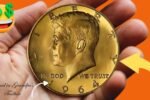Lincoln Wheat Penny : In the world of rare coin collecting, astonishing stories occasionally surface—none more captivating than the claim surrounding a Lincoln Wheat Penny valued at a jaw-dropping $99 million. While this may sound like fiction, it has sparked intense interest among collectors and casual pocket-change checkers alike.
The Origins of the Lincoln Wheat Penny
The Lincoln Wheat Penny, officially known as the Lincoln cent, debuted in 1909 to commemorate the 100th anniversary of Abraham Lincoln’s birth. Designed by Victor David Brenner, it was the first U.S. coin to feature a real person’s likeness. The reverse side, with two stylized wheat ears, earned it the nickname “Wheat Penny.”
These coins were produced from 1909 until 1958, after which the design changed to the Lincoln Memorial reverse. Most Wheat Pennies are worth only a few cents to a couple of dollars, depending on age and condition. However, specific minting errors and rare years can catapult the value to astronomical heights.
The $99 Million Penny: Fact or Fiction?
The idea that a single penny could be worth $99 million strains belief. Yet, stories have circulated in numismatic circles and across viral social media posts about a 1943 bronze Lincoln Wheat Penny being valued at nearly this amount.
Here’s the reality: In 1943, during World War II, pennies were struck in steel coated with zinc due to copper shortages. However, a few bronze planchets (the copper-based blanks used in earlier years) accidentally remained in the minting machines, resulting in a tiny number of copper 1943 pennies. These “error” coins are among the most coveted in U.S. coin history.
While one of these 1943 bronze Lincoln pennies sold at auction for over $1.7 million in recent years, no verified sale has ever approached the $99 million mark. Experts agree that such a valuation is likely exaggerated or fabricated for sensational appeal.
Why People Are Still Searching
Despite the dubious $99 million claim, the legend of the ultra-rare Wheat Penny has ignited widespread interest. It’s not uncommon for people to dig through jars of coins, hoping to discover one of the rare 1943 copper or 1944 steel pennies—both worth thousands, if authentic.
How to Spot a Valuable Wheat Penny
If you’re now tempted to examine your pocket change, here are some tips:
Check the date: Look for 1909-S VDB (extremely rare), 1943 bronze (should not stick to a magnet), and 1944 steel (should stick to a magnet).
Examine the condition: Coins in mint state or with minimal wear are far more valuable.
Use a magnet: A quick test for 1943 or 1944 cents—if it sticks, it’s steel; if not, it might be bronze.
Authentication: Always consult a certified numismatist before assuming a coin is worth big money.
Conclusion
While there’s no confirmed Lincoln Wheat Penny truly worth $99 million, the myth persists and fuels excitement. What is real, however, is the chance that a valuable rarity could still be circulating. So, the next time you get change at the store, take a closer look—history (and a small fortune) might be hiding in your hand.
Frequently Asked Questions (FAQs..)
Q1: Is there really a Lincoln Wheat Penny worth $99 million?
A: No verified Lincoln Wheat Penny has ever sold for $99 million. While extremely rare pennies like the 1943 bronze Lincoln cent have sold for over $1 million, the $99 million figure appears to be a myth or internet exaggeration.
Q2: Why is the 1943 Lincoln Wheat Penny so valuable?
A: In 1943, pennies were supposed to be made of steel due to a copper shortage during World War II. A few were mistakenly struck on bronze (copper-based) planchets. These error coins are extremely rare and highly valuable, with one selling for over $1.7 million.
Q3: Is the $99 million penny still in circulation?
A: There’s no confirmed evidence that a $99 million-valued Lincoln Wheat Penny is in circulation. However, rare coins occasionally do surface in everyday change, especially from old coin jars or inherited collections.




